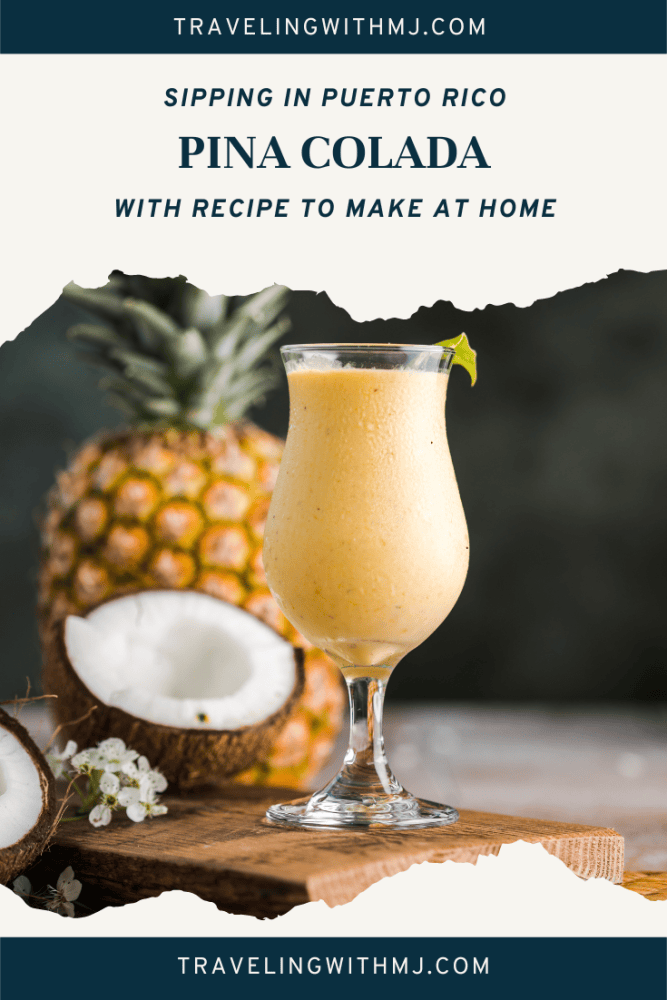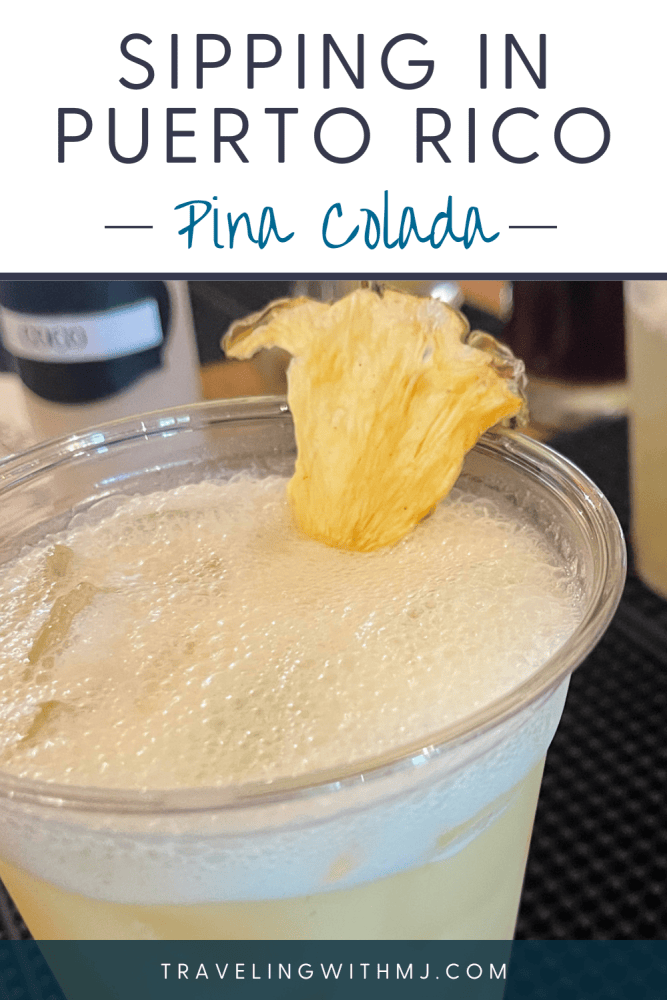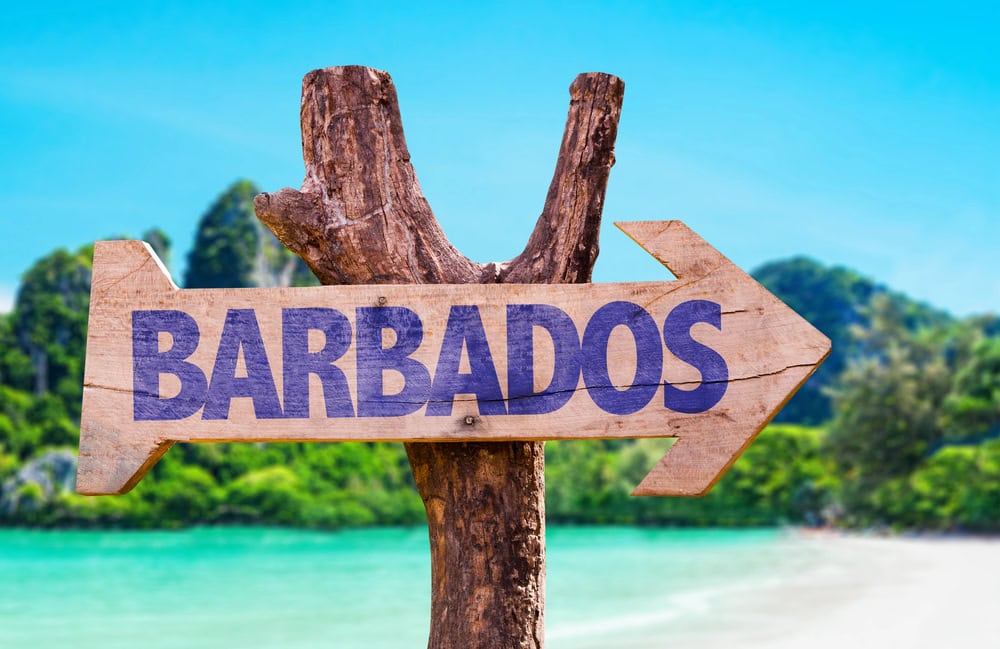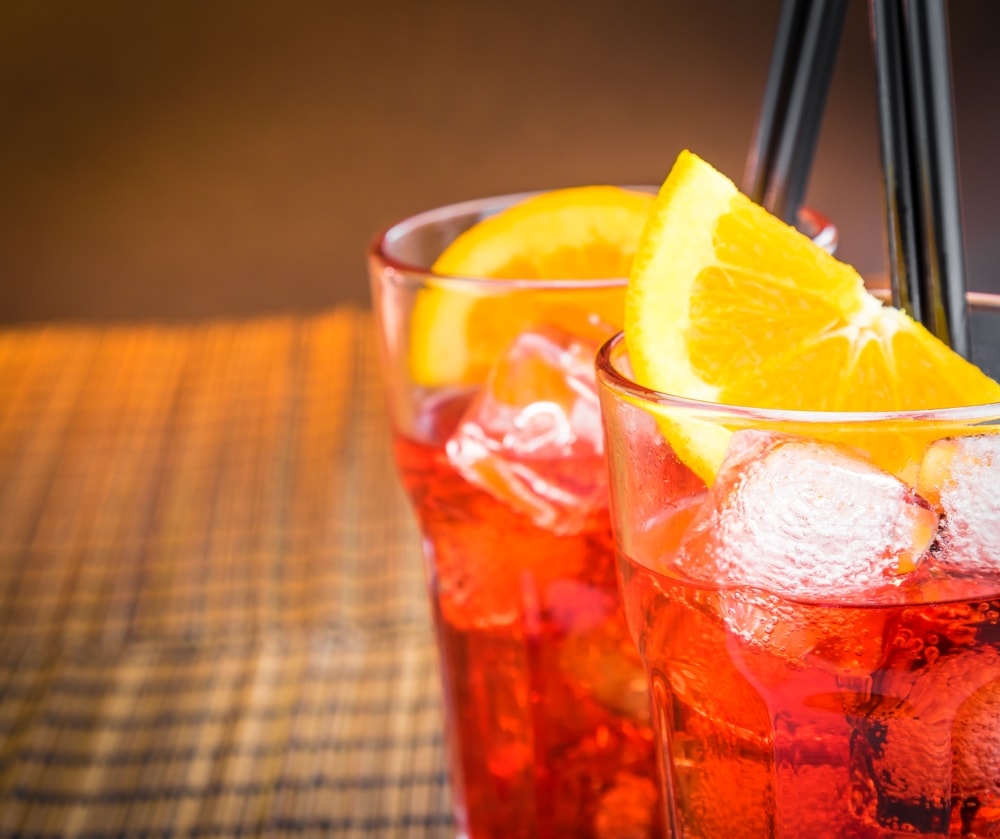I have always had a fondness for a Pina Colada – the official drink of Puerto Rico. This highly celebrated drink even has its own day, National Pina Colada Day on July 10th every year.
Whenever I visit the Caribbean, or any tropical destination, sipping a pina colada is always on my to-do list. A frosty pina colada gets me into that island vibe. That sweet taste of coconut and pineapple goes down quite easily!
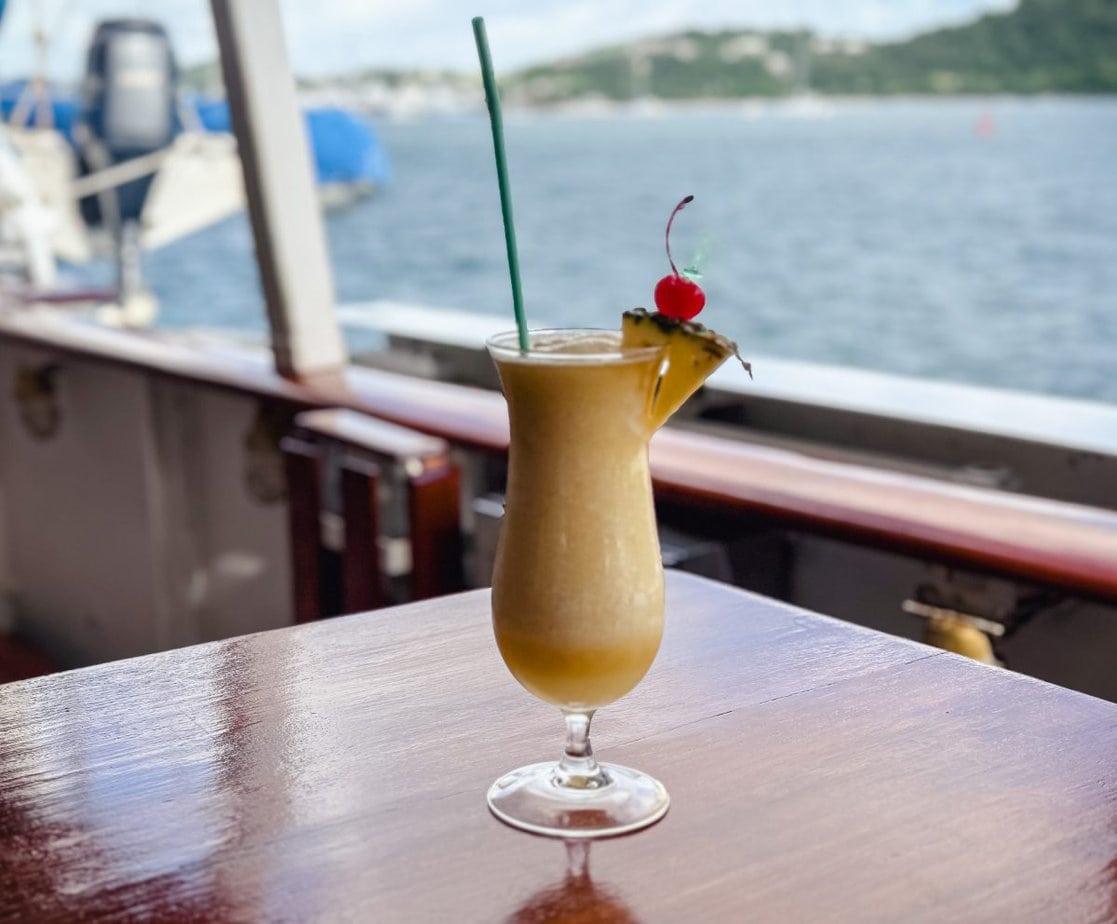
The pina colada makes up nicely as an non-alcoholic mocktail as well. Anytime you read “cocktail” in this post, feel free to substitute “mocktail.” It’s not just the rum that makes it tasty.
Let’s learn more about the Pina Colada.
What Is a Pina Colada?
Pina Colada is a tropical cocktail that mixes coconut cream, white rum, pineapple juice, and ice. The cocktail’s origin story traces back to Puerto Rico, which is the reason why it’s gained the moniker of the official drink of Puerto Rico.
The name itself means “strained Pineapple” in the Spanish language. Pina is the Spanish word for pineapple, and colada means washed or strained. Straining the pineapple is, of course, part of the process in making the cocktail.
I’ve included the recipe that I use, which closely aligns with the classic pina colada, below.
History of the Pina Colada
As a curious traveler with a love for different types of food and drink around the world, the history of food always piques my interest. I love all the facts and stories surround dishes (check out my post on the disputed Pisco Sour), and the pina colada has its share of controversy regarding the history of the drink.
There is a dispute among some restaurants claiming that this drink was invented by their bartenders. The Caribe Hilton Hotel (located outside of the ciy of San Juan) and Barrachina restaurant (located in Old San Juan) both lay claim to the original recipe of the Pina Colada recipe. Bartender Ramon Monchito Marrero at the Caribe Hilton Hotel, and bartender Ramon Portas Mingot at Barrachina, are the two men mostly frequently given credit for the pina colada drink.
Marrero claims to have invented the drink while experimenting with new recipes in 1954. Mingot claims to have invented the same drink in a similar process of experimentation in 1963. Based on the dates, most sources give creit to Marrero and the Caribe Hilton Hotel. While the competing stories make for a lively debate, they provide a perfect way to dig into island lore.
This cocktail became popular after it was featured in the Elvis Pressley movie, “Blue Hawaii.” The movie came out movie in 1961, which lends support to the Caribe Hilton claim that it invented the drink. The namesake drink, a Blue Hawaiian, is basically a blue pina colada (made blue with the addition of blue curacao).
In 1978, the pina colada was declared Puerto Rico’s national drink. The cocktail has become a signature drink far beyond its original island. You’ll find it listed on most cocktail menus around the world, and likely listed as a specialty in bars in tropical destinations.
Who makes the perfect pina colada? I’ll let you do the research and let your taste buds be the judge.
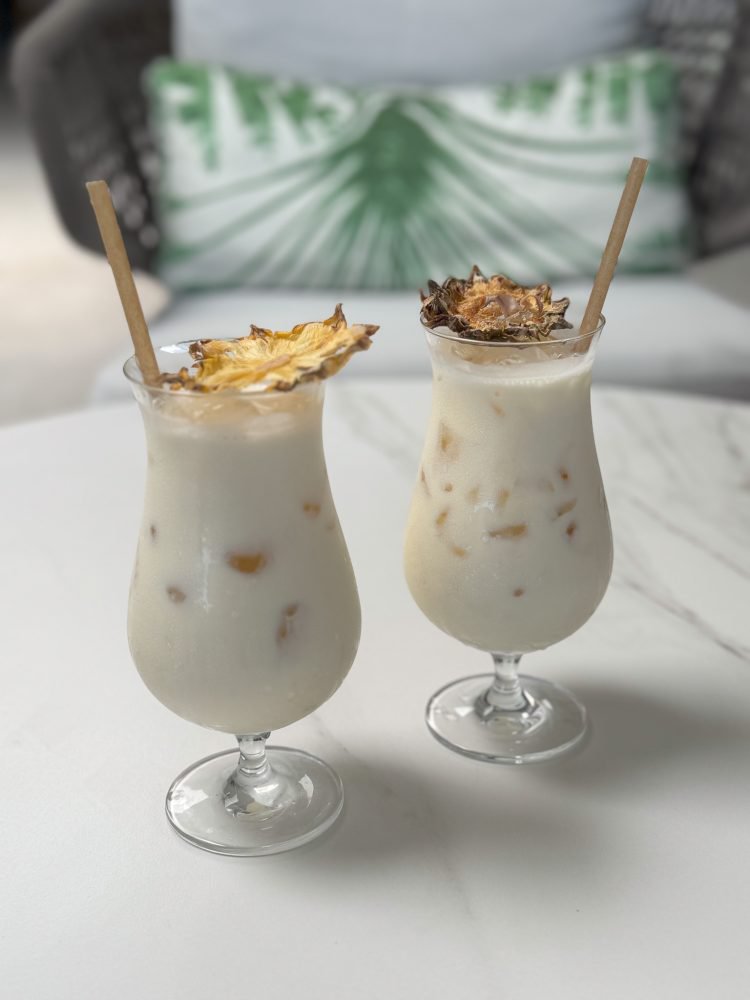
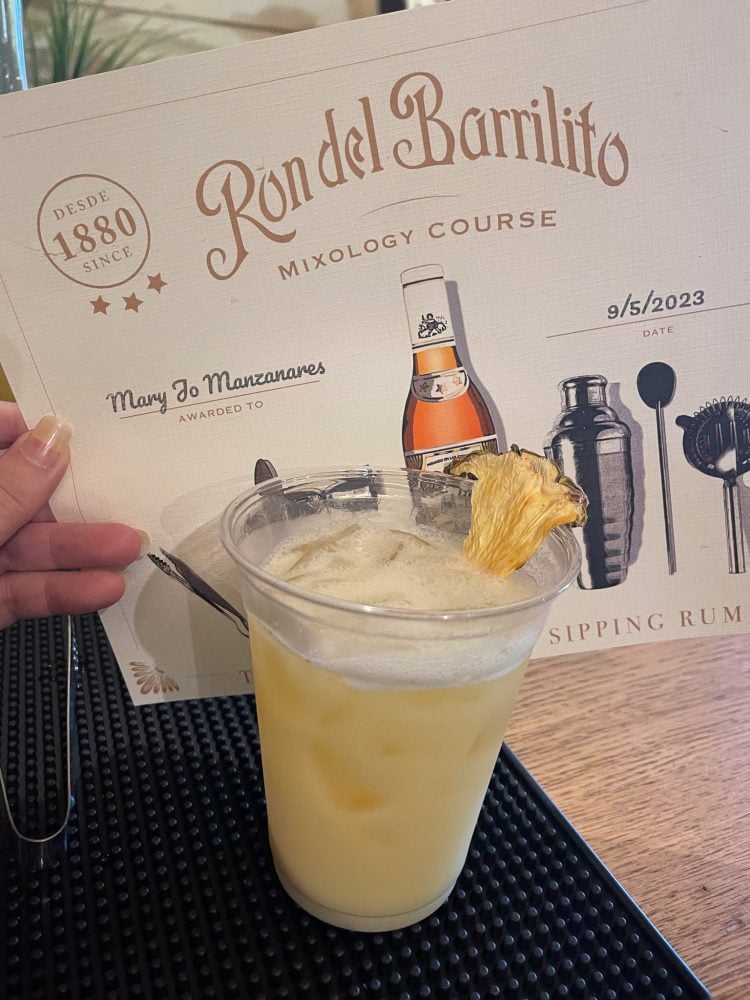
Pina Colada Ingredients
You’ll need the following ingredients:
Rum
White Puerto Rican rum is regarded as the best choice for a Pina Colada. This isn’t a surprise as Puerto Ricans are justifiable proud of their rum production, whether for cocktails or for sipping.
I brought home some Three Star Ron del Barrilito rum after taking a cocktail class at the distillery. It’s also a great choice, especially for adding a little rum floater on top. Your local choices and taste preference may differ. In general, avoid dark rum as it has too much caramel flavor and may overpower the fruit. Don’t be afraid to experiment to find what makes your perfect pina colada.
Pineapple
Fresh ingredients are always best, but I’ve been known to buy frozen pineapple chunks and frozen pineapple juice because fresh isn’t always available at my local grocery store. I’m not a fan of canned pineapple and juice, but friends have the knack for doctoring it up and making it work. Some trial and error likely required.
Using pineapple chunks, rather than merely juice, makes the cocktail and little thicker and frothier. That’s my preference, but it may not be yours.
Cream of Coconut
The cream of coconut adds a sweet and creamy texture to the cocktail. It also adds a coconutty flavor that helps to balance pineapple juice acidity.
Cream of coconut is not the same thing as coconut cream, coconut milk, or coconut water. You definitely don’t want to use coconut milk or coconut water in your pina colada as both are thin and watery.
The easiest ingredients to get confused with is coconut cream and cream of coconut. They sound the same, right? Coconut cream is the cream that rises to the top of a can of coconut milk. It packs a powerful coconut flavor. Cream of coconut is a sweetened version of coconut cream and is used in a variety of cocktails and desserts.
For the pina colada, you want to use cream of coconut. I use Coco Lopez cream of coconut (this brand). It’s a heavy cream that gives the drink a thick, frothy consistency. I’ve never made one with coconut cream, so you may want to experiment to find if that works for you. Coconut cream has a long shelf life (two to five years when stored properly), so if it’s hard to find localy, stock up when you can find it. I keep a couple of cans in my pantry.
Garnish
The classic garnish is a fresh pineapple wedge, slice of fresh pineapple, or sometimes just a chunk, and a maraschino cherry. Often a paper umbrella. At home, my tall frosty glass often has no garnish at all, but you will see these classics in most bars.
If you want to get fancy schmancy, try garnishing with a flower (orchids and hibiscus are particularly attractive) or a few coconut shavings.
Pina Colada Variations
Apart from the classic or original Pina Colada, bartenders around the world love to come up with variations on the theme – a twist to change up the taste with various other ingredients. They all maintain that tropical fruit cocktail flavor.
Some popular variations include:
- Mango colada – Use unsweetened mango juice or nectar, along with cubes of mango. Fresh is the best, but frozen will do in a pinch. Garnish with a lime wedge.
- Chocolate colada – This combines two unlikely ingredients, pineapple and chocolate. I’ve seen it made with chocolate sauce and with dark Creme de Cacao, topped with chocolate shavings. This sweet-citrus combination doesn’t work for me, but the combination works for many.
- Banana colada – Banana, pineapple, and coconut just seem to go together, so this combination come as no surprise. Cocktail recipes vary calling for banana liqueur or a ripe banana. It’s so much fun to experiment.
- Strawberry colada – Add a handful of fresh strawberries to the classic recipe for a little extra oomph of flavor. Frozen berries will work in a pinch, but tend to be a little too sweet for my taste preference.
- Cowboy colada – This one substitutes whiskey for rum in the classic pina colada recipe. I think the whiskey cuts down the sweetness that comes from a fruity blend of rum, but I really don’t like whiskey.
Virgin Pina Colada
True confession here, I’m more of a wine lover than a cocktail lover, so I’m perfectly happy to skip the rum and have a virgin pina colada. It’s a tasty option if you want to avoid alcohol.
Classic Pina Colada from Puerto Rico
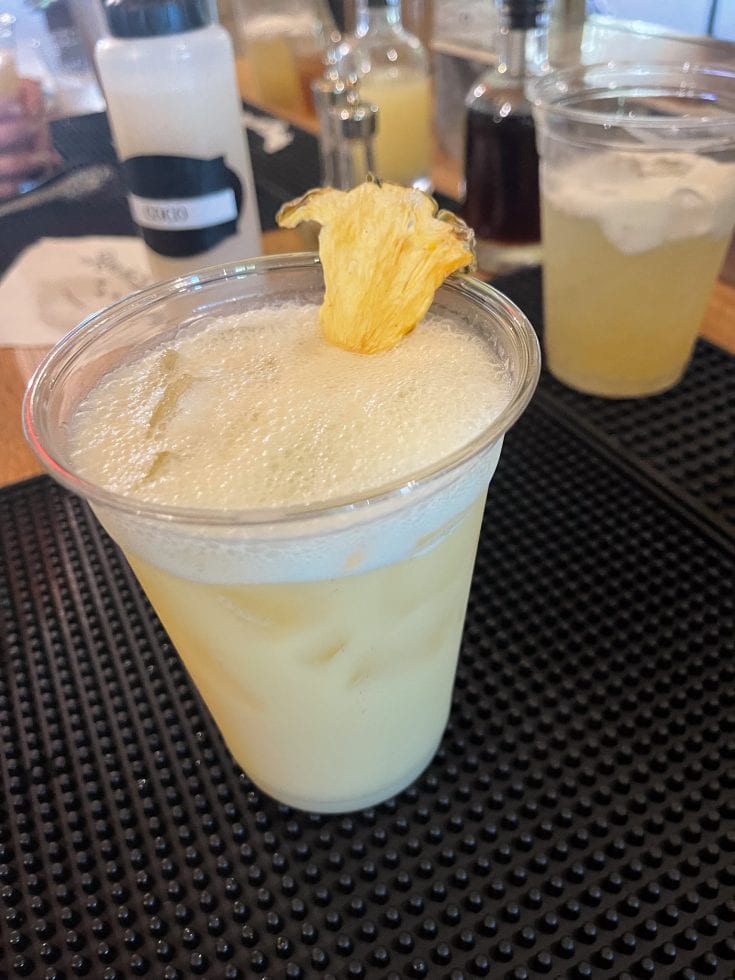
In 1978, the pina colada was declared Puerto Rico's national drink. The cocktail has become a signature drink far beyond its original island. You'll find it listed on most cocktail menus around the world, and likely listed as a specialty in bars in tropical destinations. Who makes the perfect pina colada? I'll let you do the research and let your taste buds be the judge.
Ingredients
- 3 ounces white rum
- 3 ounces cream of coconut
- 3 ounces pineapple
- 1/4 cup frozen pineapple chunks (fresh frozen or pre-frozen)
- 2 cups ice
- OPTIONAL: 2 ounces golden ru,
Instructions
- Put pineapple juice, chunks, cream of coconut and white rum in a blender.
- Blend until frothy, but not completely liquified. A little pineapple texture is great, but you don't want it chunky.
- Pour into glasses and garnish with paper umbrella, pineapply, or a pineapple chunk.
- OPTIONAL: Add a floater of golden rum on top of the drink.
Save to your favorite Pinterst boards
